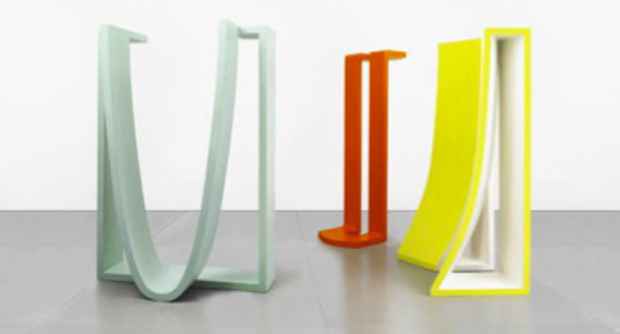George Sugarman “Painted Wood”
Garth Greenan Gallery

This event has ended.
Gary Snyder Gallery presents George Sugarman: Painted Wood, an exhibition of sculpture at 529 West 20th Street. The exhibition is the most comprehensive presentation of the artist’s work in over twenty-five years. Nine of the artist’s exuberant, polychromed wood sculptures will be on view, including one that has never before been exhibited—Archer (1968). A fully illustrated catalogue will accompany the exhibition, with an extensive essay by Raphael Rubinstein.
The exhibition and its accompanying publication offer an in-depth look at Sugarman’s work during the 1960s—large-scale wood sculptures of eccentric, proliferating forms painted in brilliant hues. Works in the exhibition such as The Shape of Change (1964), Yellow and White (1967), and Threesome (1968–1969) well exemplify the radical, innovative spirit of Sugarman’s sculpture from this period. As early as 1959, Sugarman broke with many prevailing sculptural conventions: he dispensed with the pedestal and began placing his work directly on the floor; he decentralized his compositions, breaking individual sculptures into multiple related “units”; foremost, he employed a dramatic, almost baroque use of color.
“In my sculpture, the color is as important as form and space. The important thing is that it has a tremendous emotional impact, and the experience of the spectator, in seeing color allied to a three-dimensional form, is something that is quite novel at first, in fact, quite shocking. An important aspect is that the color is not used decoratively. It’s not used to be pretty or attractive. It is used to articulate the sculpture in space.”
Born in Bronx, New York in 1912, George Sugarman attended New York City College. During the early 1950s, using his GI Bill benefits, Sugarman travelled to Paris and studied with Cubist sculptor Ossip Zadkine. This was his only formal art training. Upon his return to New York in 1955, the artist found himself newly inspired by the city’s diverse architecture (in contrast to the “unity” of Paris). By the early 1960s, this gleefully disjunctive, haphazard quality had worked its way into Sugarman’s sculpture. It remained omnipresent until his death in 1999.
Media
Schedule
from May 08, 2013 to June 15, 2013